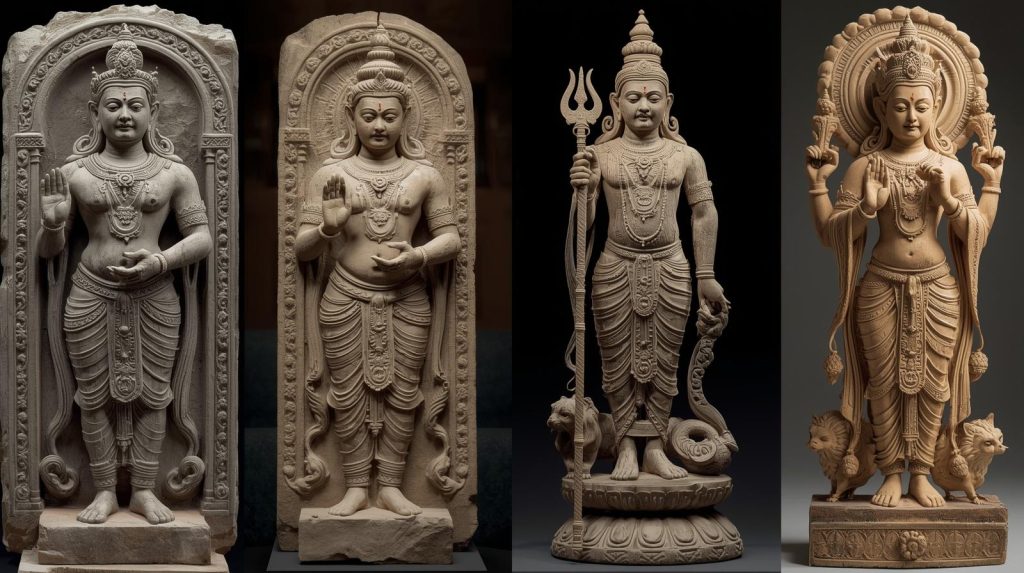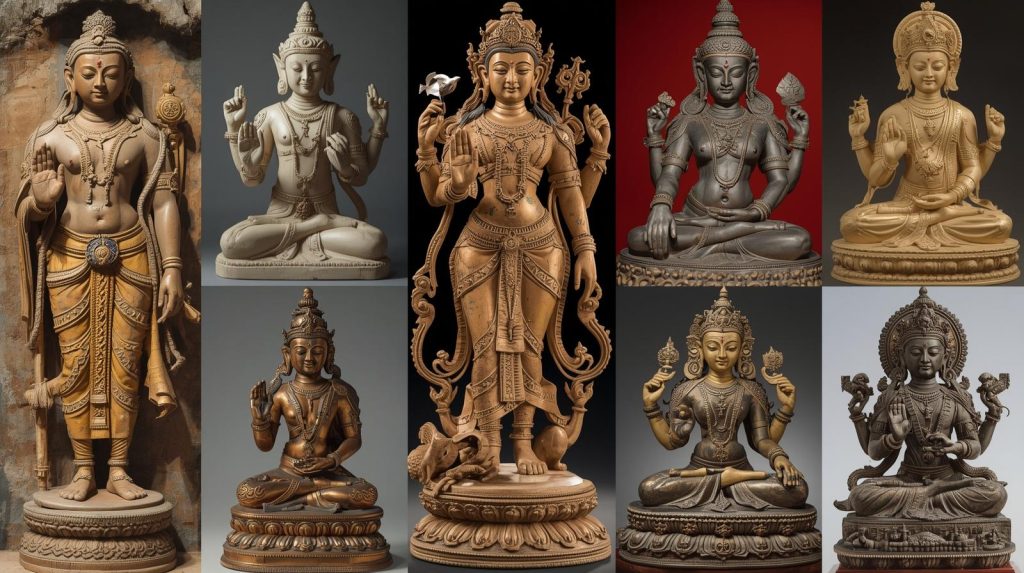Tirthankar Suvidhinath Swami, the 9th Jain Tirthankar, has been celebrated through centuries of art and sculpture, reflecting the devotion, creativity, and spiritual values of Jain culture. From ancient stone carvings to modern temple murals, these depictions not only honor his life but also serve as visual tools for meditation, inspiration, and learning.

Ancient Sculptures and Stone Carvings
- Early depictions of Suvidhinath Swami can be found in stone temples of Rajasthan, Gujarat, and Madhya Pradesh.
- Sculptors portrayed him in a meditative lotus posture, often seated or standing on a lotus pedestal, symbolizing spiritual purity.
- Stone carvings include intricate ornamental details, sacred motifs, and his Lanchhana (crocodile symbol), reflecting the artistry and devotion of the time.
Temple Murals and Paintings
- Over centuries, murals in Jain temples began illustrating Suvidhinath Swami’s life events, miracles, and teachings.
- Vibrant colors, geometric patterns, and symbolic elements in these paintings help devotees visualize his virtues and integrate them into spiritual practice.
- Many of these murals are accompanied by scriptural inscriptions, offering both artistic beauty and spiritual guidance.
Modern Artistic Representations
- Contemporary artists continue to depict Suvidhinath Swami in digital art, bronze statues, and temple installations.
- These modern creations often combine traditional iconography with innovative techniques, making the Tirthankar accessible to new generations of devotees.
- The crocodile emblem, meditative posture, and serene expression remain central in every artistic representation.
Symbolism in Art
- Every sculpture and painting emphasizes:
- Inner Peace – Calm expressions reflect mastery over desires and emotions.
- Detachment – Simple postures signify renunciation and spiritual focus.
- Guidance for Devotees – Artistic depictions serve as visual reminders of ethical and spiritual values.
- Cultural Heritage – Preserving centuries-old techniques and Jain artistic traditions.


